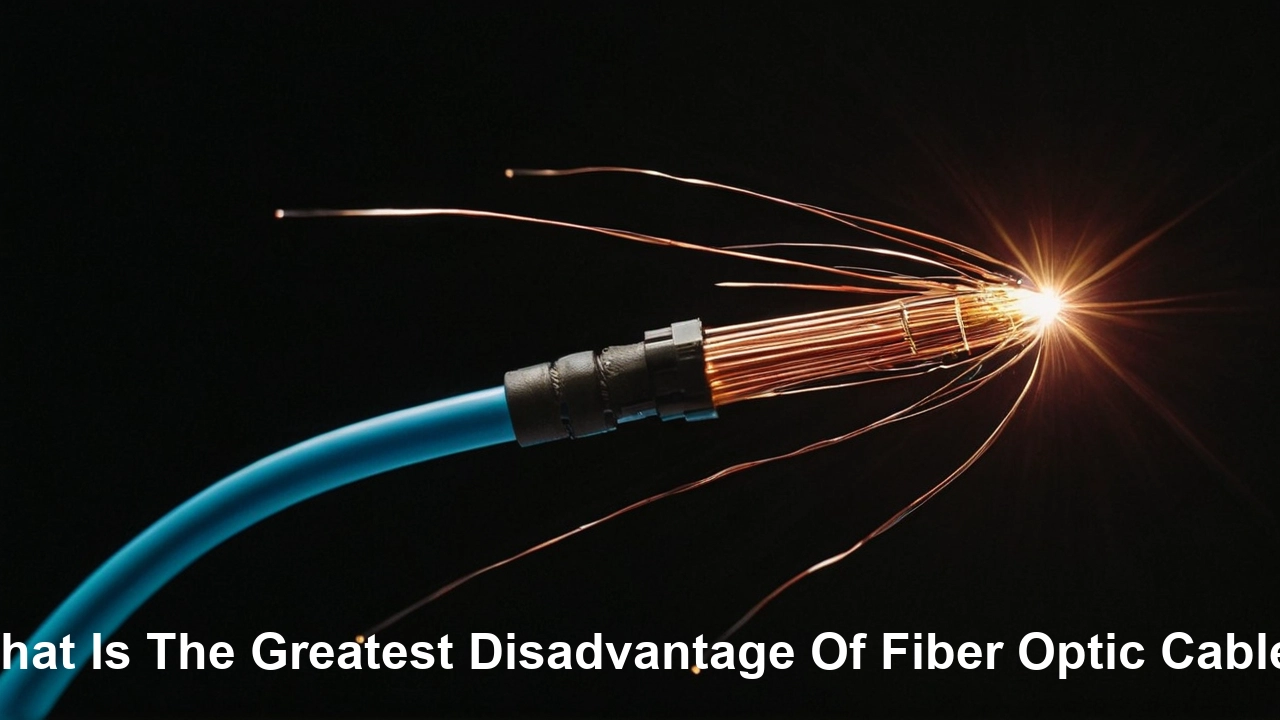What is the greatest disadvantage of fiber optic cable?

The largest weakness associated with fiber optic cable is that it is much more expensive than copper cable. Fiber optics cost $300-$1000 per foot to install while copper cable only averages $0.20-$2 per foot to install. This makes fiber optics 10 to 100 times more than copper cabling, in addition to it being extremely delicate making it difficult to work with.
There are several reasons why fiber optic cable costs so much more to install than copper.
1. Flexibility – While it is more flexible than copper wire, glass fiber is more delicate than copper wire and therefore needs to be handled with care during its installation to avoid getting damaged in a way that compromises the data signal. This adds considerable input of labor input, which is not very cost-effective. Unlike copper cables, fiber optics requires special tools as well as special training when installing them, while copper cables can be installed using basic tools.
2. Special Splicing – This is mainly so because when dealing with fiber optic cable runs, there are needs to splice or repair the line, and a lot of pressure is involved. The individual fiber strand and their glass core and cladding are so small that microscopic inaccuracies in splicing destroy the connection. Specialized splicing equipment, consumables used in the fiber splicing process, and specialized training for the technicians add to the overall cost in comparison to the splicing of copper wire.
3. Transceivers - Like with all other types of cables, fiber optic cables need powered devices known as transceivers at the two ends for conversion of the light signals to electrical signals. These transceivers must be compatible with the fiber cable that is installed. Longer multi-kilometer cable segment lengths and higher quality single-mode fiber mean that the transceivers have to be of very high precision to work, and these can cost well over $1000 even in volume.
4. Signal Conversion – Ethernet connection: Many networking devices and end-user devices employ copper RJ45 ports for the connection to the network. Thus, for each device that should connect to the OO, there must be an active media converter or a switch. This incurs additional hardware expenses, over and above those required for constructing the cable plant.
5. Bandwidth Mismatch – Fiber can transmit virtually infinite bandwidth over long distances without losing quality. However, many applications such as Ethernet LAN networks are sufficient for 1Gbps or even less. This results in high costs of bandwidth that is not used most of the time whereas fiber offers extra capacity when it may not be needed.
Fundamentally, for a given installation, fiber optic infrastructure consists of more sensitive and valuable devices, electronics, terminations, and specialty hardware than a copper-based network. Substantially increasing the installation costs for the first deployment, and also subsequent maintenance and fixing problems arising from these extra technologies supporting all these extra technologies.
For big firms and corporations that require a higher bandwidth backbone transport to transport Terabytes of data from one building or location to another, fiber is the best medium for transporting such bandwidth. However, if deployed for applications that do not need such a vast ability, fiber is seen to be overkill costing ten to thirty times as much as Category 5 or 6 copper structures.
It is also important to note that fiber as a medium has higher reliability and robustness against electromagnetic interference when used over very long distances than copper. However, for installations of less than several hundred meters, copper can offer sufficient reliability for practically all applications, including 10 Gbps Ethernet. Therefore, copper networks are still significantly cheaper for the bulk of connections within a building and shorter campus intervals.
However, fault rectifications are generally costlier and time-consuming, especially for fiber optic cable faults. Locating the cut or the break is not possible with simple cable testers that are used on copper media, but instead, it has to be done with optical time domain reflectometers. Then joining back the damaged fibers in the right manner is relatively more difficult and time-consuming as compared to fanning copper wires. Therefore, the additional operating expenses required for the fiber plant are higher than those of copper year after year for overall maintenance.
In summary, which was also depicted in the case of the previous scenarios, copper wiring,g, thou,gh possesses its own distance and bandwidth penalties concerning fiber optics; fiber has an astronomical price premium, which makes it very difficult to justify in many networking contexts. Prices of transceivers, media converters, splice equipment or labor, and installations increase the overall deployment pricing tremendously. Therefore, for those applications that do not demand multi-gigabit backbone bandwidth or cable runs more than hundreds of meters, current normal Category 5e or 6 copper channels still offer the lowest total installed cost in most buildings and campus networks. One must always analyze his/her options before concluding that fiber optic is necessary for a particular installation.
I aimed to discuss some of the factors that make fiber optic cables to be more costly than copper media when it comes to installation as well as maintenance. If you have any additional questions or if you need me to expand on any part of the disadvantages or alter anything in the overview summary section, please let me know.
Upgrade to faster, more reliable AT&T Fiber Internet today! Call us at +1 844-905-5002 and get connected with speeds that keep you ahead.





